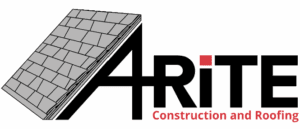Unwanted noise is a common problem in households, especially those near busy roads, airports, or high-traffic areas. The constant noise can be annoying, distracting, and even affect sleep. One effective solution to minimize the noise and eliminate experiencing grumpy mornings is soundproofing.
While you can use different methods to soundproof a room, proper insulation is one of the most affordable and efficient ways. Understanding how insulation works through soundproofing your home can help keep the noise out.
The Science Behind Sound Insulation
Before diving into the specifics, it’s essential to understand the science behind sound insulation. Sound waves travel through vibrations in the air or through physical objects, such as walls and floors. Sound insulation reduces the amount of sound that travels through these surfaces.
The effectiveness of sound insulation depends on two factors—thickness and density. The thicker the insulation, the more effectively it can block sound waves. The denser the insulation, the better it can absorb sound waves.
Types of Insulation for Soundproofing
It helps to use the best material when soundproofing your home. The best insulation for soundproofing is dense and thick, which means materials like fiberglass, mineral wool, or cellulose insulation are typically the best choices. Other insulation types, such as spray foam or foam board insulation, are more effective for temperature insulation than soundproofing.
Where To Insulate for Soundproofing
It’s essential to know the areas where sound waves can penetrate to maximize the effect of insulation in reducing noise. In most cases, sound waves travel through walls, floors, ceilings, and doors, so those should be your focus areas.
Insulating the inside walls and ceilings, especially those adjacent to noisy areas, can help reduce noise travel to other parts of the house. Don’t forget to install insulation in the doors and around windows to fend off sound.
Hiring a Contractor vs. DIY
While adding insulation can be a DIY project, assessing your skills and knowledge is crucial before tackling the job. Even if you believe adding insulation in wall cavities or attics is relatively simple, ensuring correct installation in challenging areas demands a trained and experienced expert. Hiring a soundproofing contractor is a wise investment to ensure the insulation is in the best areas of the home while using the most efficient materials.
Other Soundproofing Techniques To Consider
By now, you should realize insulation can significantly reduce the noise level in your home. However, it does not eliminate it in all situations. This limitation is particularly true if you live in a noisy neighborhood or in proximity to an active roadway or airport.
Other soundproofing techniques, such as installing sound-absorbing panels or curtains, can further minimize noise. Installing thick carpets or area rugs can also help absorb sound waves and reduce the noise level in your home. Incorporating these items with proper insulation should turn your home into the closest thing to a soundproof bunker.
Understanding soundproofing through your home’s insulation helps you select the right insulation type and thickness to significantly minimize noise levels. Instead of wrestling with the decision and the process of soundproofing your home, let the professionals at A-Rite Construction handle it.
We guarantee we will do the job right, allowing you to enjoy the beautiful sounds of silence. Contact us today to discover how our home insulation services can best serve you!




